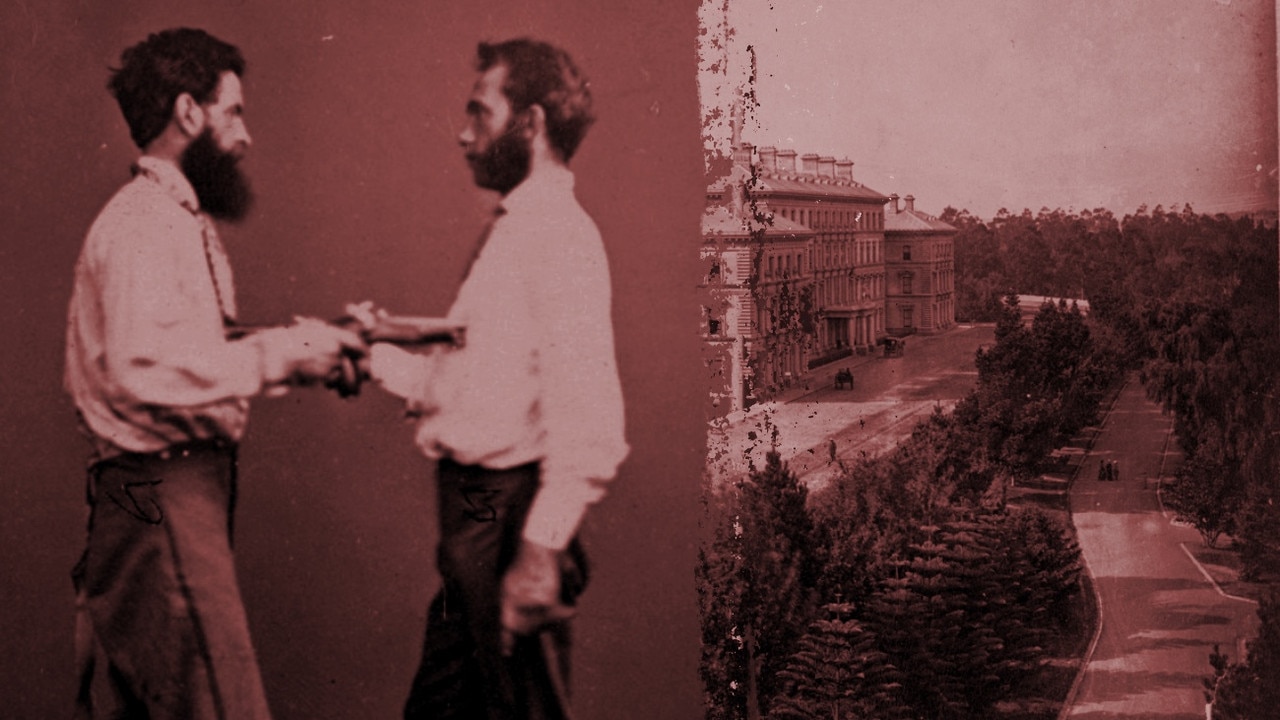Hundreds dead, treasures lost: The ships that went down off Victoria’s coast
Almost 800 ships have met a watery grave along our aptly named Shipwreck Coast and other parts of Victoria. These are the stories of tragedy at sea and the treasures lost.
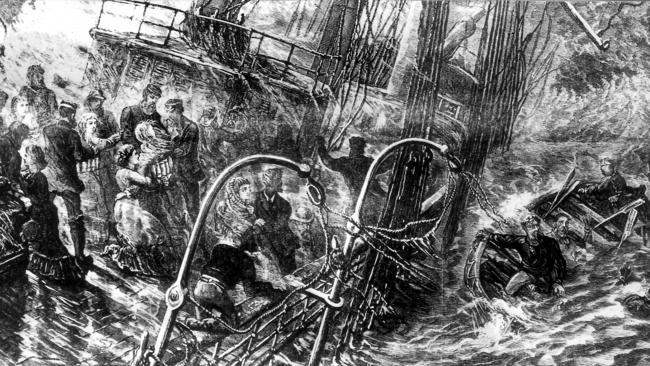
Melbourne
Don't miss out on the headlines from Melbourne . Followed categories will be added to My News.
Victoria's coastline is littered with shipwrecks — around 800 vessels that met a watery grave in the “garden state” since 1797.
Dozens of sailors were drowned or swept out to sea, while others were plucked from the swell moments from death.
Of all the ships that went down, only 240 of them have been discovered — the others presumably smashed to pieces on the rugged rocks and reefs along the 130km stretch of Victoria aptly named the Shipwreck Coast.
Explorer Matthew Flinders said: “I have seldom seen a more fearful section of coastline”, and the many who navigated it with bated breath would most probably agree.
Gales, human error and, in some cases, foul play caused these vessels to be wrecked — with hundreds of thousands of pounds of cargo lost to the seas.
Bass Strait was the route to the riches of the goldfields, and the deep waters of Portland Harbour were the gateway to a new life in Victoria.
EARLY MELBOURNE SITES THAT SHAPED OUR CITY
Small coastal traders and large ships carried cargo and immigrants between Europe, America and the new colonies in Victoria, more often than not battling severe storms and treacherous seas.
There are lots of fantastic wreck dive sites around the state; and if you consider yourself an amateur marine archaeologist, there are plenty of wrecks that are yet to be found.
Take a look at some of the ships that sailed their final journey in Victoria.
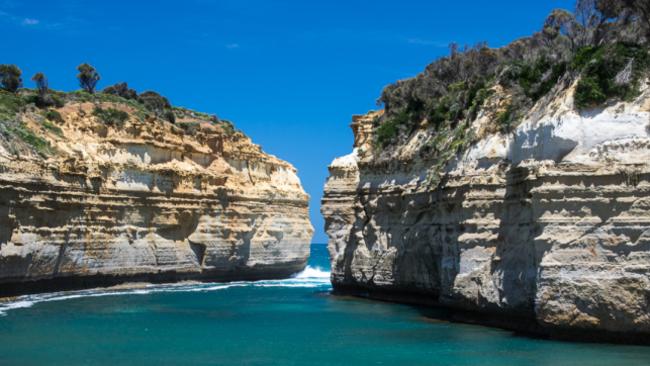
Loch Ard 1873 — 1878
Loch Ard was bound for Melbourne in 1878 loaded with passengers and cargo when it ran into a rocky reef at the base of Mutton Bird Island, near Port Campbell.
Of the 54 crew members and passengers on board, only two survived: an apprentice, Tom Pearce and a young female passenger, Eva Carmichael, who lost all of her family in the tragedy.
The wreck of Loch Ard still lies at the base of Mutton Bird Island and much of the cargo has been salvaged. Some was washed up into what is now known as Loch Ard Gorge following the shipwreck. Cargo and artefacts have also been illegally salvaged over many years before protective legislation was introduced.
TAKE A HIKE: MELBOURNE’S BEST WALKS
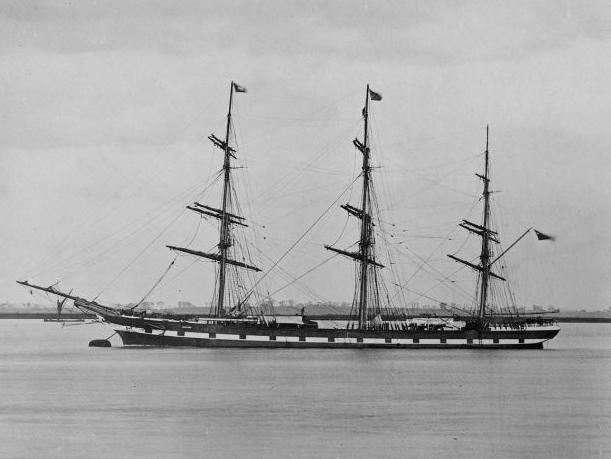
One of the most unlikely pieces of cargo to have survived the shipwreck was a Minton porcelain peacock — one of only nine in the world. The peacock was destined for theMelbourne International Exhibition in 1880. Thankfully, it was well packed which in no doubt gave it adequate protection during the violent storm which battered the stricken Loch Ard.
Today, the Minton peacock can be seen at the Flagstaff Hill Maritime Museum in Warrnambool. From Australia’s most dramatic shipwreck it has now become Australia’s most valuable shipwreck artefact and is one of very few ‘objects’ on the Victorian State Heritage Register.
Recently revalued at over $4 million dollars, this priceless piece is a must see during your visit to Warrnambool and journey along the Great Ocean Road.

S.S. Barwon 1863-1871
The steamship S.S. Barwon sank in Bridgewater Bay after striking a reef off Cape Bridgewater during foggy weather. The remains of the vessel can still be seen from the cliffs overlooking the bay.
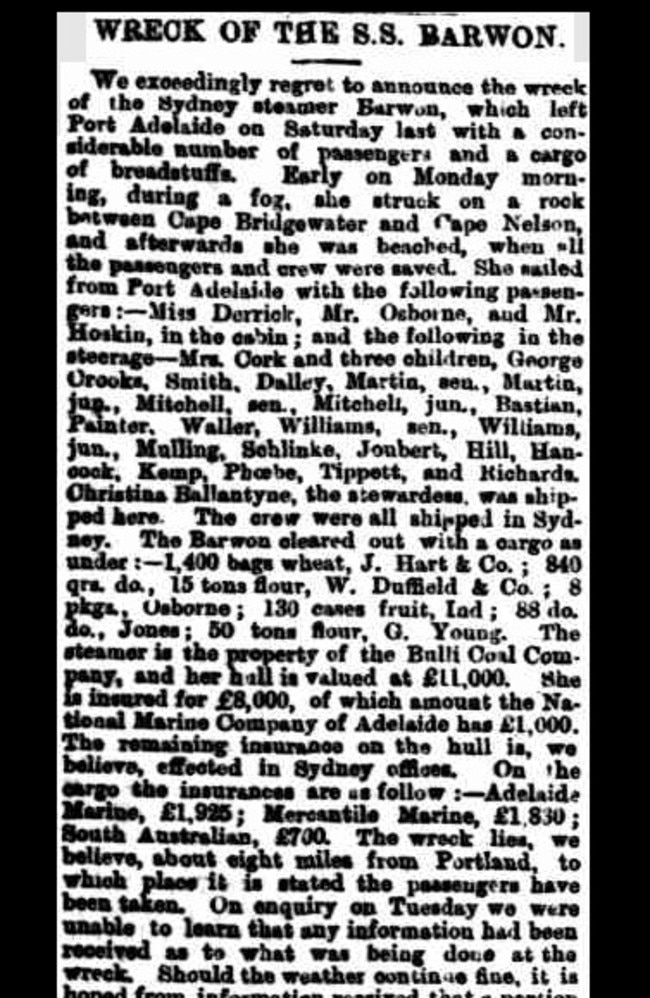
Regia 1835 — 1860
The remains of the Indian-built barque Regia, grounded during a severe gale, can still be seen lying in two metres of water next to the reclaimed land on the Portland foreshore.
The remains of the ship are a popular dive site which can be easily accessed.
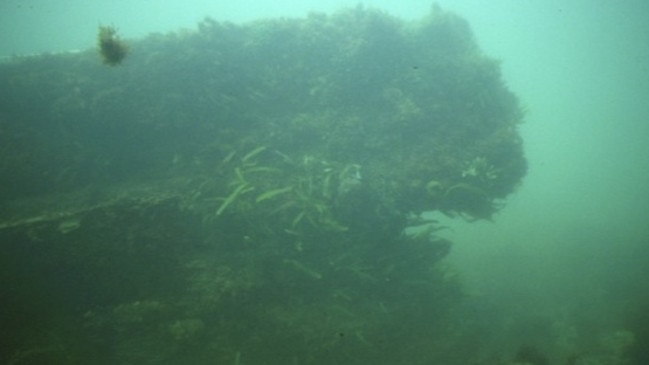
New Zealander 1852 — 1853
The immigrant ship New Zealander had discharged its 465 passengers and was undergoing repairs when it caught fire. The remains of the wreck can still be seen in the water below the Lighthouse Reserve.
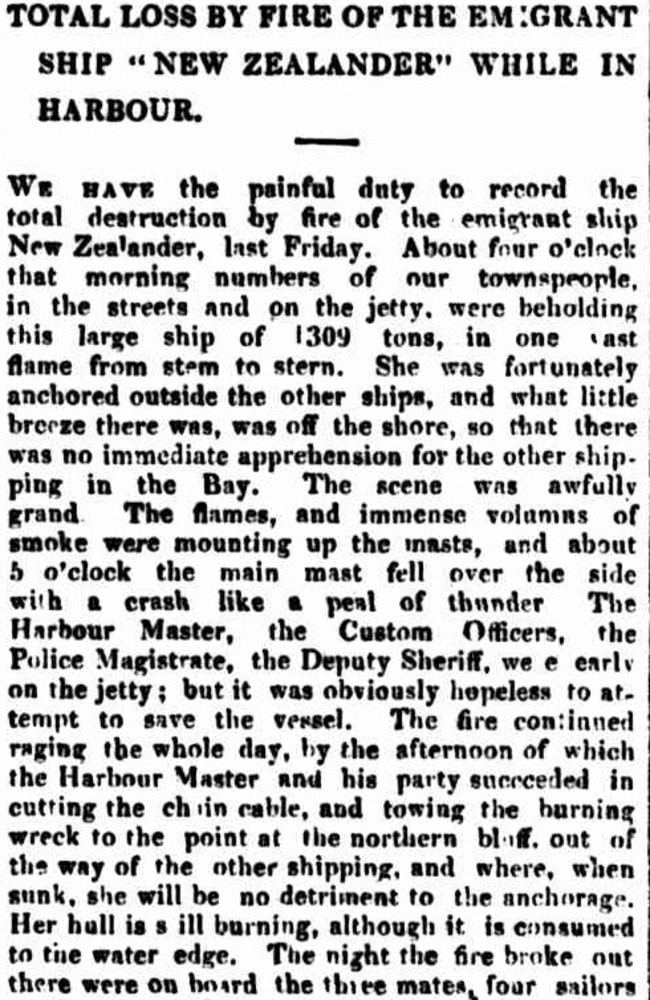
Nestor 1840-1854 (not found)
The immigrant ship Nestor was lost due to foul play.
After the wreck, divers discovered three holes bored in the hull and the master was later arrested and charged with sinking his ship — although charges were dropped due to lack of evidence.
The Argus reported: “John Buckman, cabin boy on board the Nestor said when the carpenter said there were 10 inches of water in the hold the captain said ‘never mind pumping’”.
Constant 1843 — 1855 (not found)
The Constant had just discharged 229 immigrants before being blown ashore during a storm, possibly because of poor anchors.
John Ormerod 1826 — 1861 (not found)
The brig John Ormerod was hit by a sudden squall off Cape Northumberland and six of the crew were swept overboard. The captain and two seamen were rescued when the wreck drifted close to the lighthouse and it eventually washed ashore west of Portland. The vessel had been carrying flour from Adelaide to Sydney.
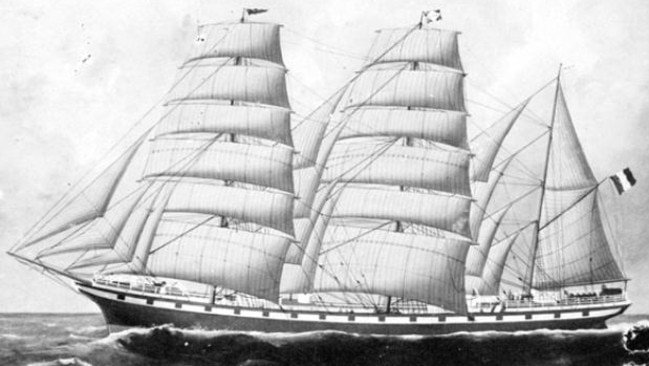
Marie 1851 (not found)
On a voyage from Antwerp to Sydney via Adelaide, the Marie was wrecked off Cape Bridgewater in September 1851. All on board, including the Belgian Consul, were drowned. A month later large amounts of wreckage and cargo were found near Portland.
Jane 1863 (not found)
Poor visibility caused the schooner Jane to be wrecked at Cape Bridgewater in June 1863. A local resident, Waldy Hedditch, was drowned during the rescue attempt.
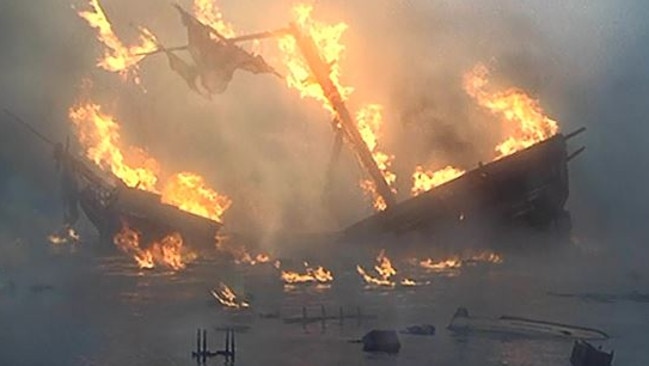
Empress of the Sea 1853-1861
In August 1861, Empress of the Sea berthed in Melbourne after an exceptionally fast voyage of 66 days from Liverpool. The vessel never again left Australian waters.
Some of the crew deserted the ship to seek their fortunes on the goldfields and new crew had to be found.
On December 18, 1861, under the command of Captain J (Bully) Bragg, Empress of the Sea finally left Hobsons Bay with 12 passengers and 45 crew, some of whom had little or no seafaring experience.
The ship was also carrying a very valuable cargo — £80,000 of gold, 2,711 bales of wool, 100 casks of whale oil, whale bone, bags of leather and woollens, wheat, flour and 180 tons of copper ore.
Late that evening, the vessel arrived at Queenscliff where Captain Bragg and his first officer went ashore to find more crew. While they were away, a fire broke out in the forward hold and quickly spread through the ship.
The fire was soon out of control and lifeboats were lowered with passengers, crew and gold off-loaded.
A boat with five crew and the gold could be seen disappearing towards the heads but a pilot boat managed to apprehend the crew and their loot.
A Court of Inquiry held shortly after the wrecking found that the fire was a deliberate act of arson. Goldman, the German quarter master, was the chief suspect but there was insufficient evidence to convict him.
In late December, the hull and the remaining cargo of the Empress of the Sea were sold at auction for £3,750.
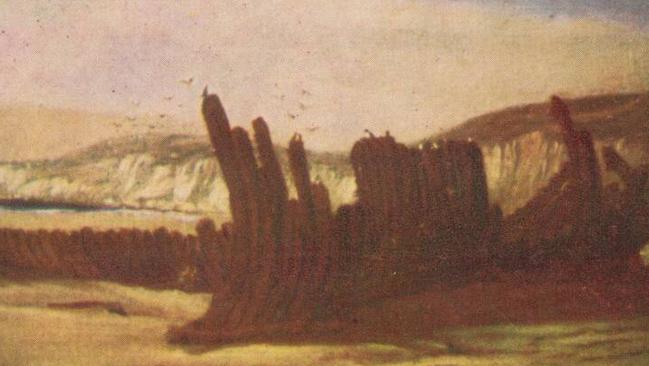
Mahogany Ship — 1836 (not found)
In the early nineteenth century there were several sightings of an ‘ancient wreck’ in dunes between Port Fairy and Warrnambool. Hypotheses about its identity vary from ‘sixteenth century Portuguese caravel’ to ‘early American sealing vessel’. This mysterious wreck has not been found despite extensive searches and the offer of a government reward of $250,000 in 1992-93.
Sightings of the ship have been reported in newspapers, including this one from The Argus in 1876.
“Riding along the beach from Port Fairy to Warrnambool in the summer of 1846, my attention was attracted to the hull of a vessel embedded high and dry in the Hummocks, far above the reach of any tide. The spars and deck were gone, and the hull was full of drift sand. The timber of which she was built had the appearance of cedar or mahogany”.
Edinburgh Castle 1863 — 1888
The Scottish barque Edinburgh Castle wrecked in 1888 near the mouth of the Hopkins River in Lady Bay. The ship was carrying an important cargo of cement from London for construction of the Warrnambool breakwater.
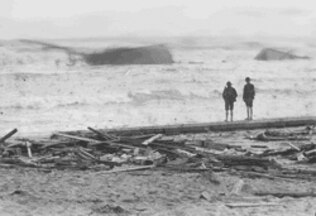
Pilot error caused the ship to run aground despite the calm weather and it settled in sand, foiling efforts to refloat it. The remains of the ship were scattered in the surf and the site is now buried, but occasionally becomes exposed during rough weather.
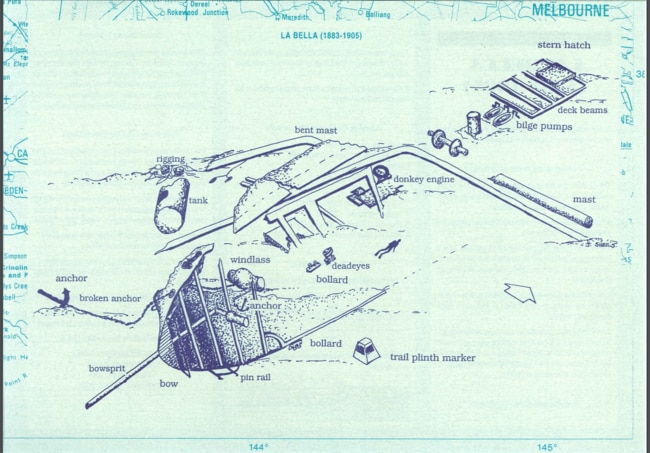
La Bella 1893-1905
Norwegian-built La Bella was approaching Warrnambool with a cargo of timber from New Zealand when it ran aground on what is now known as La Bella Reef. By sunrise only seven of the 12 crew still clung to the wreck. A local fisherman, William Ferrier, rowed his small punt through heavy seas to rescue two of the crew, including the captain, while the volunteer lifeboat crew rescued a further three before La Bella broke in half and sank.
William Ferrier was 25 years old at the time, and was awarded the Silver Medal of the Royal Humane Society for his daring rescue. The wreck now lies in 13m of water and is home to an abundance of marine life.

Antares 1888 — 1914
The Antares was the last sailing ship wrecked along the Shipwreck Coast. On a voyage from Marseilles to Melbourne during World War I, the vessel sank with the loss of all crew.
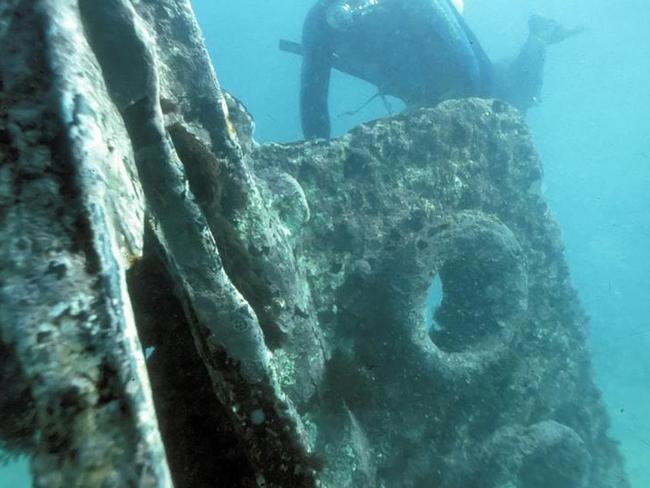
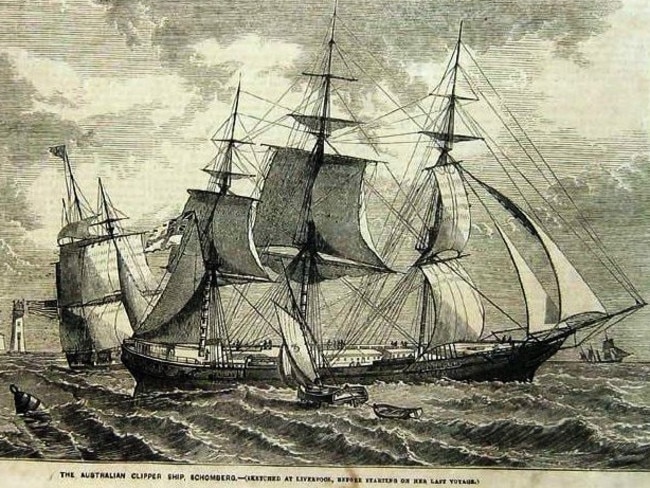
Schomberg 1855
The Schomberg was one of the most magnificent sailing ships ever built. Captain ‘Bully’ Forbes was below deck entertaining female passengers when the vessel was blown ashore at Curdies Inlet. Both the ship and the Captain’s career were wrecked.
The City Of Rayville
On November 7th, 1940 the American merchant ship City of Rayville sailed from Adelaide for Melbourne. Late on November 8th the ship was sunk off Apollo Bay, Victoria by a mine. She was the first US ship lost as a result of World War II.
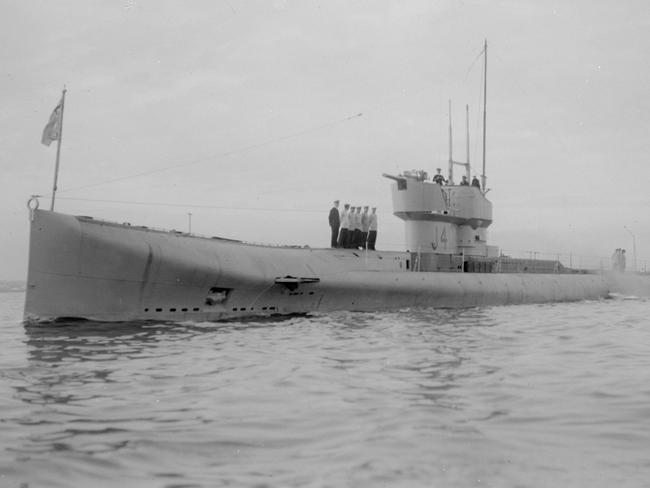
The J4 submarine
Following the First World War, the British Government gave Australia a gift of six J Class submarines and six navy destroyers in 1919. The submarines were built under an emergency war program in response to reports that the German Navy was building submarines capable of reaching speeds of 20 knots.
The submarines together with six navy destroyers left Britain on the April 9, 1919 and arrived in Sydney on the July 15,1919.
The flotilla was valued at £1.5 million, however the Royal Australian Navy spent £407,000 upgrading the submarines because they were in such a dilapidated condition.
As the submarines were gradually refitted and they sailed from Sydney to their new base in Geelong.
They carried out only one exercise in Tasmanian waters before the J1, J2, J3, J4 & J5 were decommissioned because of cuts in the defence budget. The J3 submarine was towed to Swan Island to be used as a power station and pier. The J7 which was the last submarine to be refitted, was kept in reserve.
In 1924, the Melbourne Salvage Company purchased the J1, J2, J4 and J5 submarines for £10500 and they were eventually sunk in the Commonwealth Disposal Area No. 3 also known as the ‘Ship’s Graveyard’ off Port Phillip Heads. The hull of J7 can still be seen in the Sandringham Marina as can the hull of J3 near Swan Island.
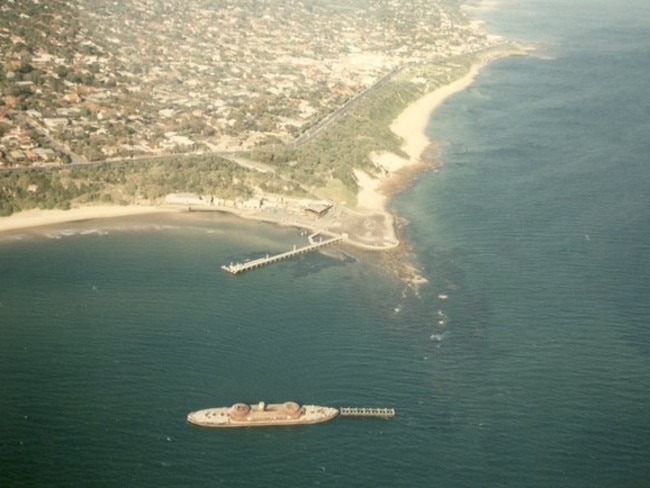
HMVS Cerberus 1870-1926
The best known shipwreck that most Melburnians are aware of is that of the HMVS Cerberus — which is less than 200m from the shore of Black Rock and in about 3m deep of water.
Because it sticks out so far from the water, it’s visible from Beach Road as you drive along the coast.
In 1866, the Victorian government ordered the building of the ship to defend Port Phillip Bay and it was completed in 1870, arriving in Melbourne in 1871.
By World War I, its weapons and boilers were inoperable and the ship was retasked as a guardship and ammunition store, and it was sold to Melbourne Salvage Company for £409 in 1924.
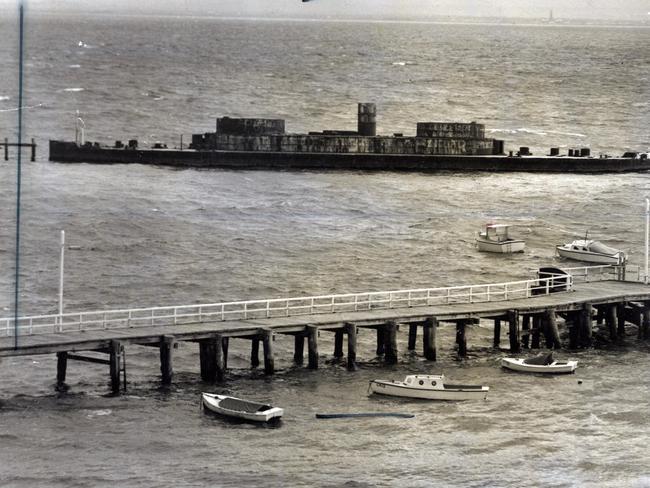
After being disassembled at Williamstown Naval Dockyard, the remaining parts were resold to Sandringham council for £150 in 1926 for sinking in Half Moon Bay to serve as a breakwater for the Black Rock Yacht Club.
Over time, the wreck became a popular scuba diving site and the exposed decks were regularly used for picnics and sunbathing.
But in 1993 Cerberus started to collapse and a 100m exclusion zone was placed around the wreck — making it off limits to divers and snorkellers.

